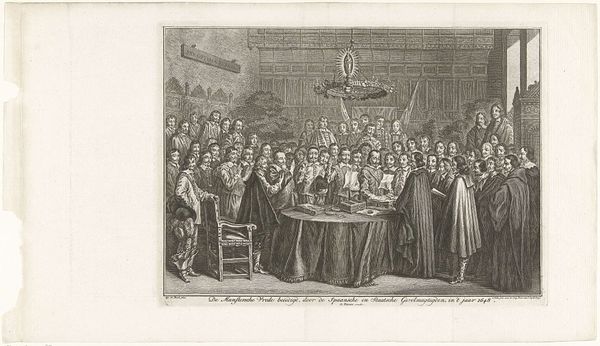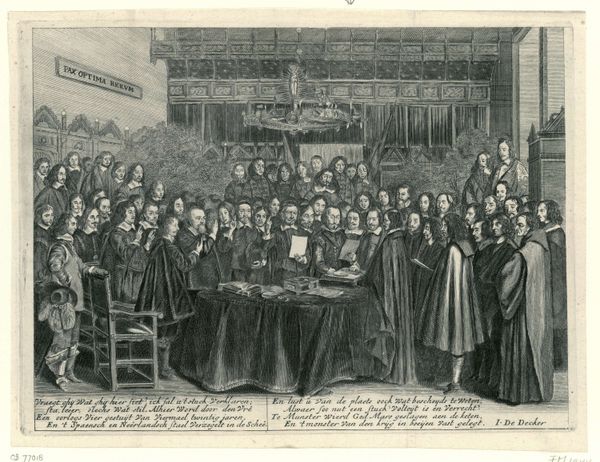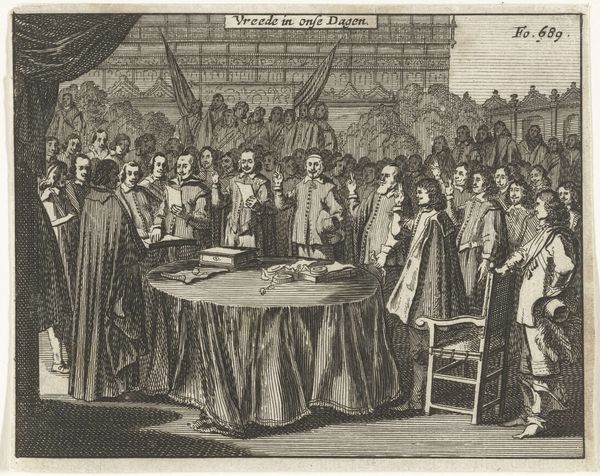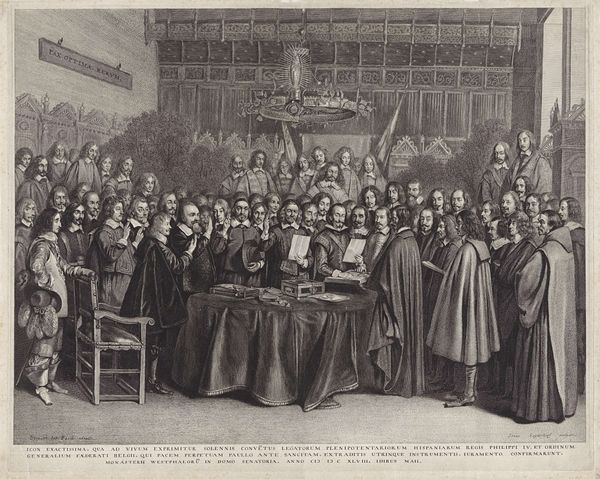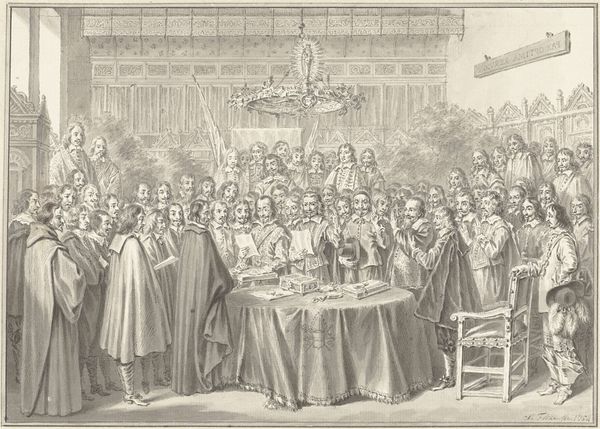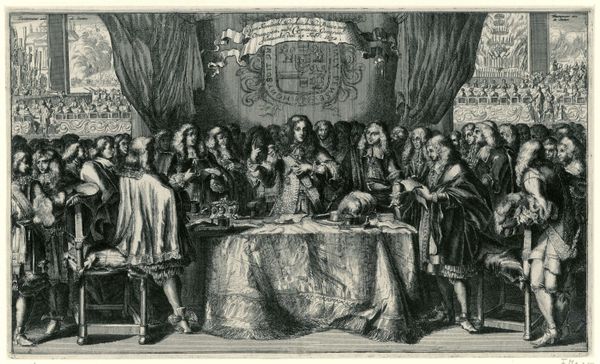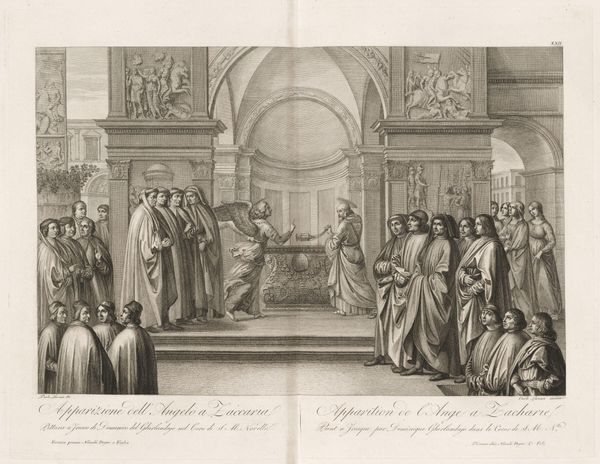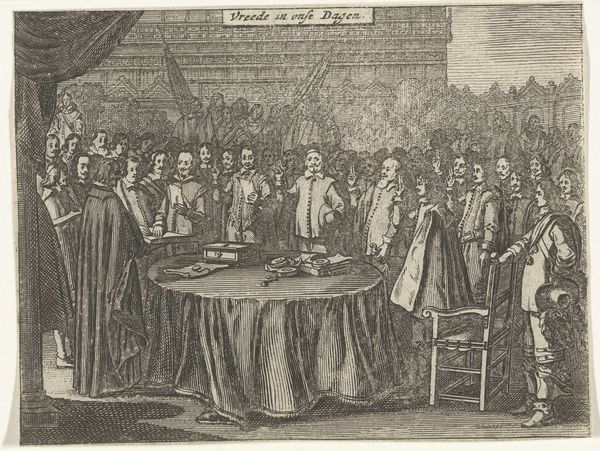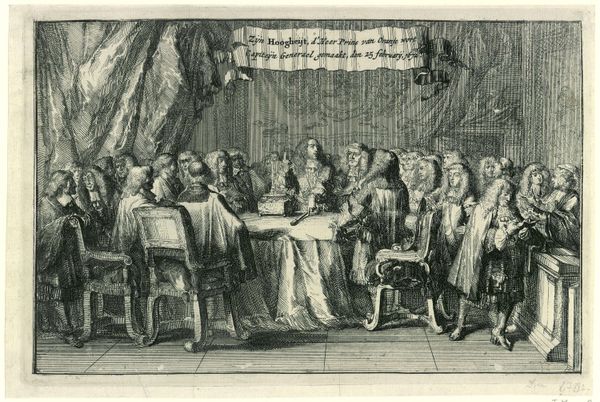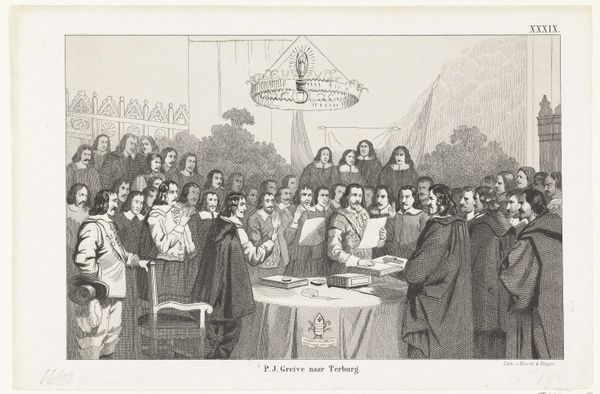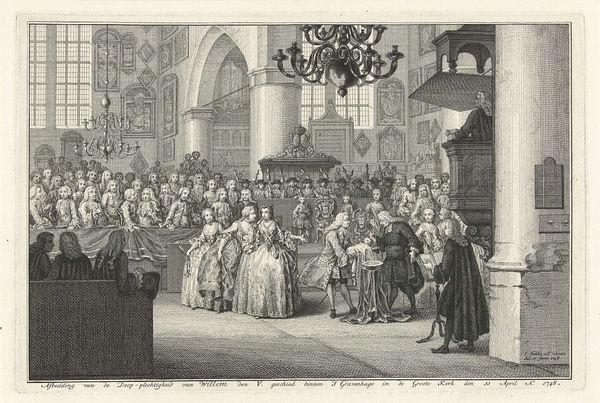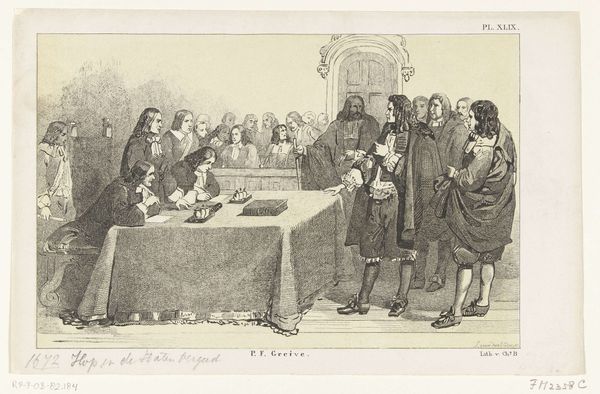
print, intaglio, engraving
#
baroque
#
dutch-golden-age
# print
#
intaglio
#
old engraving style
#
history-painting
#
engraving
Dimensions: height 187 mm, width 255 mm
Copyright: Rijks Museum: Open Domain
Editor: This is Simon Fokke's "The Ratification of the Peace of Munster, 1648," an intaglio print made in 1754. It has this old engraving style, almost like a detailed drawing. What do you see in this piece? Curator: As a materialist, I immediately think of the engraving process itself: the labour, the tools, the physical act of carving into the plate to reproduce this historical moment. The choice of printmaking makes this a commodity intended for distribution, influencing the wider consumption and understanding of the peace treaty. Editor: So, the act of creating it, making it accessible. Does that cheapen or enhance its cultural significance, being a mass-produced artwork? Curator: That's exactly the point! This is not a unique, "high art" object meant only for the elite. The means of its production speaks directly to the intention of spreading this particular interpretation of the historical event to a broader audience. Look at the precise lines of the engraving; consider the labor involved. The "truth" becomes materially embedded in the copper, reproduced on paper, consumed visually by the public. Editor: I see, so we're considering the materials not just as medium but also as method. The material choices and process were deeply influenced by the intent of disseminating specific historical, political ideas to a wider, consumer-driven society. Curator: Precisely. It compels us to confront the relationships of labor, accessibility, and the construction of history itself. Are the masses being manipulated through these easily-shared art prints? Who would purchase and own them? What statement do these prints, then, serve as historical documentation? Editor: So it's about digging beneath the surface and questioning the materials themselves? Curator: Yes. In a way, the materiality is not just *how* it’s made, but *why*, for whom, and what socio-political meanings can be interpreted from its wide circulation. Editor: Thanks, I hadn't thought about how material impacts and is impacted by consumers. Curator: Exactly! That tension defines so much art history, as cultural products intended for different layers of society and social context.
Comments
No comments
Be the first to comment and join the conversation on the ultimate creative platform.
